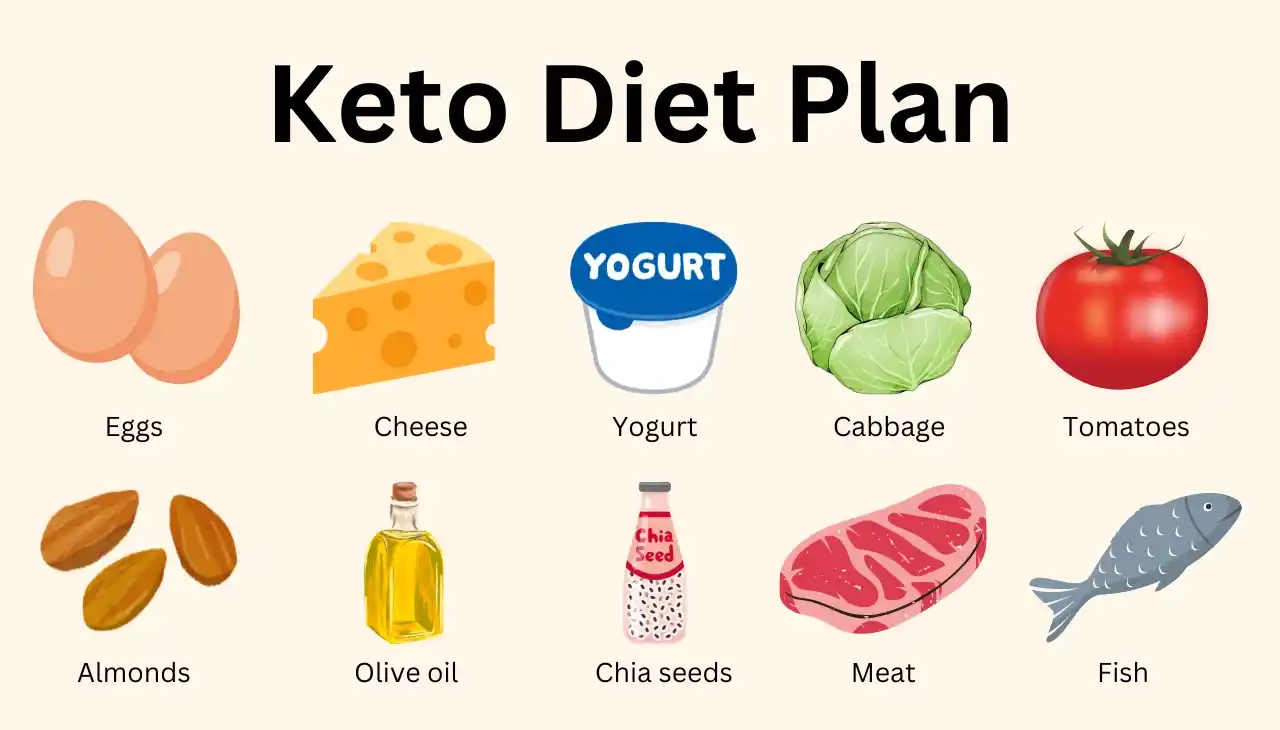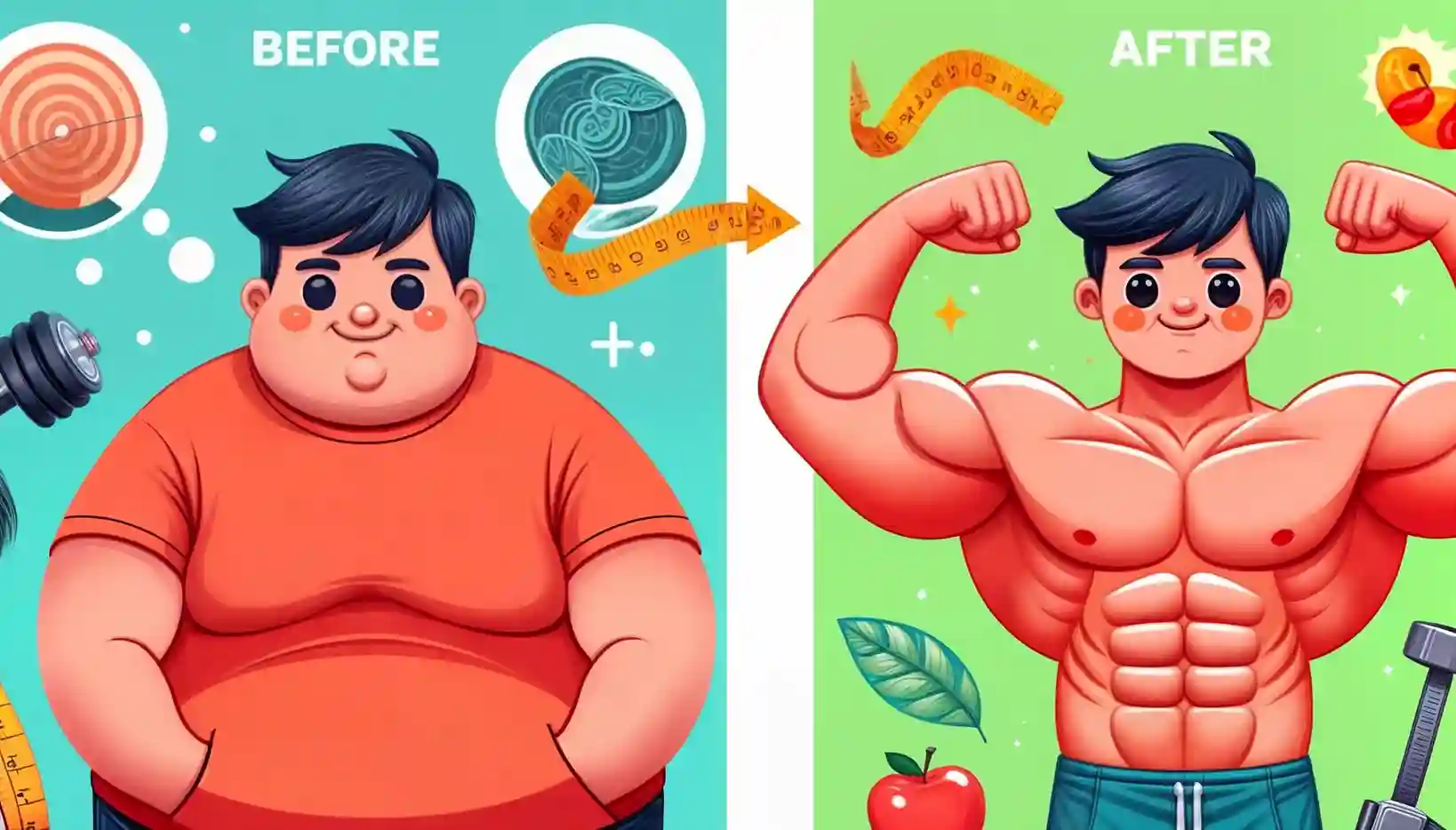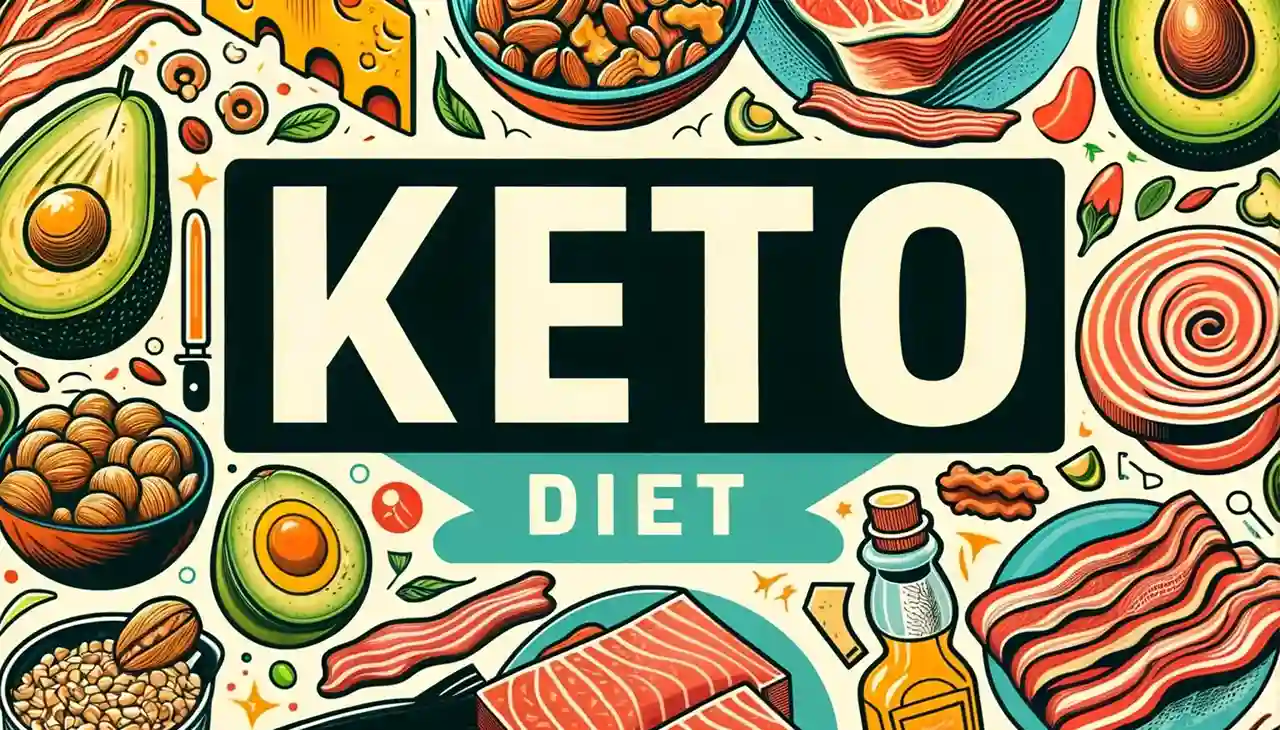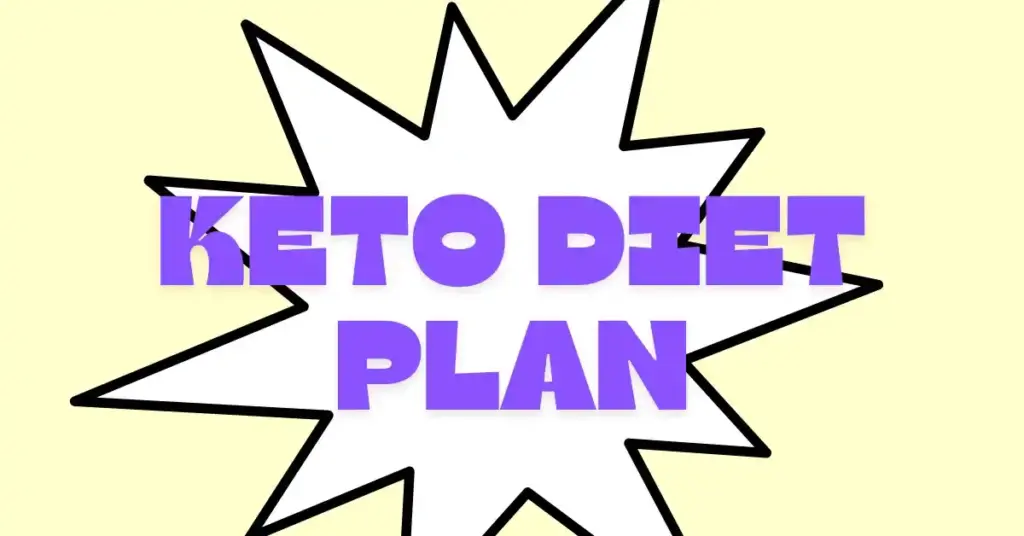Introduction
The ketogenic or “keto” diet has taken the world by storm in recent years. This low-carb, high-fat dietary approach has become a popular choice for those seeking weight loss, improved blood sugar control, and even potential therapeutic benefits. But what precisely is the keto diet, and is it suitable for you? Buckle up as we delve into the ins and outs of this groundbreaking nutritional plan.
Is the Keto Diet Suitable for Everyone?
While the keto diet has proven beneficial for many, it’s crucial to understand that it may not be suitable for everyone. Individuals with certain medical conditions, such as kidney disease or liver disorders, should exercise caution or avoid the keto diet altogether. Additionally, women who are pregnant or breastfeeding may need to reconsider this approach, as the impact of extended ketosis on fetal and infant development is not yet fully understood.
Understanding the Science Behind the Ketogenic Diet
At its core, the keto diet is designed to induce a metabolic state called ketosis. In this state, your body primarily burns fat for energy instead of carbohydrates, resulting in the production of ketones. The keto diet drives your body to burn fat by substantially cutting carb intake and boosting fat consumption.
But the keto diet’s benefits extend beyond weight loss. Studies have shown that it can improve insulin sensitivity and potentially aid in the management of type 2 diabetes by reducing insulin resistance and stabilizing blood sugar levels.

The Ketogenic Diet’s Impact on Weight Loss
The keto diet, also known as the ketogenic diet, is a low-carb, high-fat eating plan that has grown in popularity due to purported health advantages such as weight loss.
- Involves a state of ketosis where the body burns fat for energy instead of glucose from carbs.
- The typical macronutrient breakdown is 70-75% fat, 20-25% protein, and 5-10% carbs.
- Weight loss occurs due to a calorie deficit, appetite suppression, and water weight loss.
- Recommended foods include healthy fats, protein sources, low-carb vegetables, dairy, and moderate berries.
- Avoidances include high-carb foods, processed foods, starchy vegetables, and alcohol.
- Risks include diabetes and high blood pressure medication, and avoiding Keto Flu.
Remember that, while the keto diet has health benefits, it remains controversial. Medication adjustments may be required; thus, contact with a healthcare practitioner. If you’re new to keto, a meal plan might help simplify your experience.
One of the primary reasons people embark on the keto journey is to shed those stubborn pounds. But how exactly does the keto diet facilitate weight loss? It basically comes down to some significant factors:
- Reduced Appetite: When your body enters ketosis, it tends to suppress appetite and cravings, leading to a natural reduction in calorie intake without feeling deprived.
- Increased Fat Burning: By shifting your body’s primary fuel source from carbs to fat, you essentially tap into your own body’s fat stores for energy, leading to accelerated fat loss.
- Metabolic Boost: Some research suggests that the keto diet may slightly increase your metabolic rate, further enhancing weight loss efforts.
However, it’s important to note that the keto diet isn’t a magic bullet for weight loss. Like any dietary approach, consistency, portion control, and a balanced approach are key. Additionally, many keto dieters experience the dreaded “plateau” at some point in their journey, where weight loss stalls temporarily. Don’t be discouraged – this is a common and natural part of the process.
Potential Health Advantages of a Keto Diet
Beyond weight loss, the keto diet has been linked to a range of potential health benefits, although more research is still needed to solidify these claims. Some areas where the keto diet shows promise include:
- Metabolic Syndrome: By improving insulin sensitivity and promoting weight loss, the keto diet may help manage or even reverse metabolic syndrome, a cluster of conditions that increase the risk of heart disease and type 2 diabetes.
- Epilepsy: The keto diet has been used as a therapeutic approach for epilepsy, particularly in children, for decades. It’s believed that ketones provide an alternative fuel source for the brain, potentially reducing seizure frequency.
- Alzheimer’s Disease and Neurological Disorders: Emerging research suggests that the keto diet may offer neuroprotective benefits and potentially improve cognitive function in individuals with Alzheimer’s disease and other neurological disorders.
- Certain Types of Cancer: While more research is needed, some studies indicate that the keto diet may help sensitize certain cancer cells to treatment and potentially slow tumor growth by depriving them of their primary fuel source, glucose.
It’s important to note that while these potential benefits are exciting, more large-scale, long-term studies are needed to draw definitive conclusions.
Keto diet what to eat
The keto diet, also known as the ketogenic diet, is a diet that is rich in fat, moderate in protein, and extremely low in carbohydrates. It seeks to put your body into a metabolic condition known as ketosis, in which it burns fat for energy instead of carbs. Here’s an overview of what you can consume on a keto diet:
Key Dietary Options:
- Fish and Seafood: Rich in B vitamins, potassium, selenium, and protein.
- Low-Carb Veggies: Non-starchy vegetables like asparagus, peppers, mushrooms, spinach, and leafy greens.
- Cheese: Keto-friendly food varieties like cheddar, mozzarella, cream cheese, and feta.
- Avocados: Rich in healthy fats, vitamins, minerals and fiber.
- Poultry and Eggs: Protein sources that fit into a keto diet.
- Nuts, Seeds, and Healthful Oils: Provide healthy fats and essential nutrients.
- Plain Greek Yogurt and Cottage Cheese: Low in carbs and can be included in moderation.
- Berries: Lower in carbs compared to other fruits.
- Unsweetened Coffee and Tea: Keto-friendly beverages without added sugar.
- Dark Chocolate and Cocoa Powder: Consumed in moderation.
Restrictions:
- High-Carb Foods: Bread, pasta, rice, potatoes, and sugary treats.
- Processed Foods: Be cautious of processed foods labeled as “low-carb” or “keto-friendly.”
- Fruits: High in natural sugars.
- Starchy Vegetables: Corn, peas, and carrots are higher in carbs.
- Alcohol: Moderation is key.
Stay hydrated by drinking water, tea, or coffee, and utilize fats like olive oil for taste and extra calories as required. If you have any dietary limitations or health concerns, speak with a healthcare practitioner or qualified dietitian before beginning any new diet plan.

Creating a Well-Balanced Keto Meal Plan
Embarking on the keto diet requires careful meal planning to ensure you’re meeting your nutritional needs while adhering to the diet’s principles. A well-crafted keto meal plan should prioritize nutrient-dense, whole foods and provide a balanced distribution of healthy fats, moderate amounts of protein, and very low carbohydrate intake.
To help guide your food choices, consider adopting a keto food pyramid. At the base, you’ll find healthy fats like avocados, olive oil, and nuts, which should make up the bulk of your caloric intake. Next, focus on high-quality protein sources like grass-fed meats, fish, and eggs. At the top of the pyramid, you’ll find low-carb veggies and limited portions of fruits, which should be consumed in moderation.
Keto diet for beginners
Let’s look at the fundamentals of the keto diet for beginners. Whether you are new to low-carb eating or simply interested about what to eat on a keto diet, I have you covered!
Keto Diet Overview
- The ketogenic diet is a low-carbohydrate, high-fat eating plan.
- It involves carb restriction, causing the body to switch from glucose to fat for energy.
- Ketosis occurs when the liver produces ketones from stored fat, providing alternative energy for the brain and organs.
- Benefits include weight loss, reduced hunger, and blood sugar control.
Keto-friendly foods:
- Healthy fats: Avocado, eggs, nuts, seeds, olive oil, coconut oil, and fatty fish.
- Protein sources: poultry, eggs, beef, and seafood.
- Low-carb vegetables: Spinach, broccoli, cauliflower, zucchini, and bell peppers.
- Dairy: Cheese, plain Greek yogurt, and cottage cheese.
- Berries: Moderation of raspberries, blackberries, and strawberries.
Foods to Avoid:
- High-carb foods: Bread, pasta, rice, sugary treats.
- Processed food: Be wary of “low-carb” items.
- Starchy vegetables: Corn, peas, and carrots.
- Alcohol: Moderation of consumption due to carb content.
Precautions:
- Consult a doctor if taking medication for high blood pressure or diabetes.
- Discuss lifestyle changes with a doctor.
What foods are in a keto diet
To stay in ketosis while on a keto diet, you must focus on particular food categories. Here’s an overview of what you can consume on a keto diet:
Keto Diet Options
- Fish and Seafood: Rich in B vitamins, potassium, selenium, and protein. Fatty fish like salmon, sardines, mackerel, and albacore tuna provide omega-3 fats.
- Low-Carb Veggies: Non-starchy vegetables like spinach, broccoli, cauliflower, zucchini, and bell peppers are low in calories and carbs but high in nutrients.
- Cheese: Keto-friendly food varieties like cheddar, mozzarella, cream cheese, and feta.
- Avocados: Rich in healthy fats, vitamins, minerals and fiber.
- Poultry and Eggs: Protein sources that fit well into a keto diet.
- Nuts, Seeds, and Healthful Oils: Provide healthy fats and essential nutrients.
- Plain Greek Yogurt and Cottage Cheese: Low in carbs and can be included in moderation.
- Berries: Lower in carbs compared to other fruits.
- Unsweetened Coffee and Tea: Keto-friendly beverages without added sugar.
- Dark Chocolate and Cocoa Powder: Consumed in moderation.
Limitations:
- High-carb foods.
- Processed foods.
- Fruits.
- Starchy vegetables.
- Alcohol.
Stay hydrated by drinking water, tea, or coffee, and utilize fats like olive oil for taste and extra calories as required. If you have any dietary limitations or health concerns, speak with a healthcare practitioner or qualified dietitian before beginning any new diet plan.
A Sample 7-Day Menu for Your Keto Diet Journey
To help you kickstart your keto journey, here’s a sample 7-day menu that adheres to the principles of the diet:
Day 1:
- Breakfast: Keto-friendly smoothie with almond milk, avocado, spinach, and berries
- Lunch: Grilled salmon with roasted Brussels sprouts and olive oil
- Dinner: Baked chicken thighs with cauliflower mash and sautéed asparagus
Day 2:
- Breakfast: Keto frittata with bacon, eggs, and spinach
- Lunch: Tuna salad lettuce wraps with avocado and cherry tomatoes and some crispy onions
- Dinner: Beef and vegetable stir-fry in coconut oil.
Day 3:
- Breakfast: Keto-friendly yogurt with berries and nuts with chia seeds.
- Lunch: Bunless cheeseburger with lettuce wraps and avocado.
- Dinner: zucchini pasta with pesto and grilled shrimp.
Day 4:
- Breakfast: Keto breakfast muffins with eggs, cheese, and bacon with diced vegetables.
- Lunch: Keto-friendly Caesar salad with grilled chicken with some crispy onions
- Dinner: Baked cod with garlic-herb butter and roasted brussels sprouts
Day 5:
- Breakfast: Keto smoothie with almond milk, spinach, and nut butter
- Lunch: Keto-friendly chili with ground beef and cauliflower rice
- Dinner: Grilled pork chops with roasted asparagus and hollandaise sauce
Day 6:
- Breakfast: Keto-friendly quiche with spinach and feta
- Lunch: Keto-friendly taco salad with ground turkey, lettuce, avocado, and cheese
- Dinner: Baked salmon with lemon-dill butter and roasted broccoli
Day 7:
- Breakfast: Keto-friendly breakfast sandwich with keto bread, eggs, and bacon
- Lunch: Keto-friendly chicken salad with avocado and cucumber slices
- Dinner: Keto-friendly pizza with a cauliflower crust, pepperoni, and cheese
Remember, this is just a starting point – feel free to mix and match meals and adjust portions to suit your individual needs and preferences.

Keto diet side effects
The keto diet, also known as the ketogenic diet, is a low-carb, high-fat eating plan that has grown in popularity due to purported health advantages such as weight loss. However, like with any dietary therapy, it has both short- and long-term negative effects. Let’s investigate them:
Short-Term Side Effects:
- Keto Flu: Symptoms include insomnia, fatigue, nausea, vomiting, endurance issues during exercise, headaches, constipation, and dizziness.
- Symptoms: Keto Flu symptoms usually improve within a few days to weeks.
Long-Term Health Risks:
- Vitamin and Mineral Deficiencies: Keto diet restricts food groups, potentially leading to deficiencies.
- Kidney Stones: High fat intake and reduced carbohydrate consumption may increase the risk of kidney stones.
- Fatty Liver: High-fat diets may lead to non-alcoholic fatty liver disease.
- Digestive Issues: Dietary changes can affect gut health, leading to constipation or changes in bowel habits.
- Bad Breath (Keto Breath): Ketones produced during ketosis can lead to foul-smelling breath.
Individual reactions to the keto diet differ. Some people thrive on it, while others may experience difficulties. Always contact a healthcare expert before beginning any new diet, especially if you have any underlying health concerns.
What are the rules for keto diet
The keto diet, also known as the ketogenic diet, is a low-carb, high-fat eating plan designed to put your body into a metabolic condition known as ketosis. Here are the essential principles for adhering to a keto diet:
- Carbohydrates: 5-10% of total daily calories.
- Fats: 70-75% of total daily calories.
- Protein: 15-20% of total daily calories.
- Carb Restriction: Reduce carb intake to 50 grams per day.
- High Fat Intake: Emphasize healthy fats like avocados, eggs, nuts, seeds, olive oil, and fatty fish.
- Moderate Protein: Consume poultry, eggs, and beef, avoid excessive protein.
- Avoid High-Carb Foods: Avoid bread, pasta, rice, potatoes, sugary treats, and processed “low-carb” foods.
- Monitor Ketosis: Use urine strips or blood tests.
- Stay Hydrated: Proper hydration is crucial for overall health and maintaining ketosis.
Remember that individual reactions to the keto diet vary, so speak with a healthcare expert before beginning any new eating plan.
Is keto diet healthy
The keto diet, sometimes called the ketogenic diet, is a low-carb, high-fat eating regimen with several health benefits. In fact, several studies have found that this sort of diet can help you lose weight and improve your health. Ketogenic diets may even be beneficial for diabetes, cancer, epilepsy, and Alzheimer’s disease.
Here are the basic rules for the keto diet:
Keto Basics:
- Keto diet involves reducing carbohydrate intake and replacing it with healthy fat.
- This ketogenic diet leads to a metabolic state called ketosis.
- During ketosis, the body burns fat for energy and produces ketones in the liver.
Types of Keto Diets:
- Standard Ketogenic Diet (SKD): Very low carb, moderate protein, high fat.
- Cyclical Ketogenic Diet (CKD): Periods of higher carb refeeds.
- Targeted Ketogenic Diet (TKD): Allows carb addition around workouts.
- High Protein Ketogenic Diet: This diet Includes more protein.
While the keto diet has its supporters, it is critical to talk with a healthcare practitioner before beginning any new eating regimen. Individual reactions may differ, and some research indicates possible dangers. Always put your health and well-being first.

What foods can’t you eat on keto
When following a keto diet, it is critical to avoid or restrict items high in carbs. Here are a few meals you should avoid:
Keto Diet Guidelines
- Avoid high-carb foods like bread, pasta, cereal and rice.
- Opt for low-carb alternatives like mashed or riced cauliflower.
- Avoid beer and mixed drinks.
- Choose lower-carb options like dry red or white wine or hard liquor.
- Avoid grain-based foods like wheat, corn, rice, granola, cereal.
- Avoid sugar-sweetened products like table sugar, soda, sports drinks, honey, agave, and maple syrup.
- Limit fruit intake, especially apples, bananas, and oranges.
Remember that the keto diet’s purpose is to induce ketosis, a metabolic state in which your body burns fat for energy rather than carbohydrates. Avoiding these high-carb items can help you remain on track and receive the benefits of the keto lifestyle!.
Ensure Nutritional Adequacy on the Keto Diet
While the keto diet can provide a wealth of health benefits, it’s essential to ensure you’re meeting your nutritional needs. Due to the restrictive nature of the diet, certain nutrient deficiencies can arise if you’re not careful.
For instance, you may need to supplement with electrolytes like sodium, potassium, and magnesium, as these can be depleted during the initial stages of ketosis.
The Keto Flu: Understanding and Alleviating Its Symptoms
One of the most common challenges faced by newcomers to the keto diet is the dreaded “keto flu.” This cluster of symptoms, which can include headaches, fatigue, brain fog, nausea, and muscle cramps, is a natural byproduct of your body’s transition into ketosis.
But don’t let the keto flu deter you from your goals! Understanding the root causes of these symptoms can help you alleviate them more effectively.
As your body shifts from burning glucose to fat for fuel, it can lead to electrolyte imbalances and dehydration, contributing to symptoms like headaches and muscle cramps. Additionally, the initial drop in carb intake can cause a temporary dip in energy levels, leading to fatigue and brain fog.
To combat the keto flu, hydration is key. Ensure you’re drinking plenty of water and replenishing electrolytes like sodium, potassium, and magnesium through keto-friendly foods or supplements. Bone broth, avocados, and leafy greens are excellent sources of these essential minerals.
It’s also crucial to give your body time to adapt to this metabolic shift. The keto flu typically lasts a week or two as your body becomes more efficient at producing ketones and utilizing them for energy.
Seeking Professional Guidance: Consulting with a Healthcare Provider or Registered Dietitian
While the keto diet can be incredibly beneficial for many individuals, it’s essential to recognize that it’s not a one-size-fits-all approach. Everyone’s dietary needs and metabolic responses can vary, which is why seeking guidance from a healthcare professional or registered dietitian can be invaluable.
Before embarking on any major dietary change like the keto diet, it’s wise to consult with your doctor, especially if you have pre-existing medical conditions or are taking medications. Your healthcare provider can assess your individual circumstances and provide personalized advice on whether the keto diet is appropriate for you.
Additionally, working with a registered dietitian can be a game-changer for your keto journey. These professionals are trained to create customized meal plans that meet your specific nutritional needs while adhering to the principles of the keto diet. They can also provide valuable guidance on navigating potential pitfalls, ensuring you’re meeting your micronutrient requirements, and troubleshooting any challenges you may encounter along the way.

Educate Yourself: Reliable Resources for Keto Diet Information
In the age of information overload, it’s crucial to seek out reliable, evidence-based resources when educating yourself about the keto diet. While the internet is brimming with keto content, not all sources are created equal.
For starters, consider investing in reputable books authored by healthcare professionals or keto experts. Some highly recommended titles include “The Complete Ketogenic Diet for Beginners” by Amy Ramos, “The Keto Diet” by Leanne Vogel, and “The Keto Reset Diet” by Mark Sisson.
Additionally, trusted websites like those maintained by academic institutions, government agencies, and reputable health organizations can be valuable sources of keto information. The Harvard Health Publishing website, for instance, offers a wealth of science-backed articles on the keto diet and its potential health implications.
Conclusion
The ketogenic diet has emerged as a powerful tool for weight loss, metabolic health, and potentially even therapeutic applications. By harnessing the power of ketosis, this high-fat, low-carb approach has helped countless individuals reclaim control over their health and well-being.
However, it’s important to remember that the keto diet is not a quick fix or a one-size-fits-all solution. It requires a commitment to lifestyle changes, careful meal planning, and a willingness to listen to your body’s unique needs.
As you embark on your keto journey, remember to stay hydrated, replenish essential electrolytes, and be patient as your body adapts to this new metabolic state. Don’t hesitate to seek guidance from healthcare professionals and registered dietitians, who can provide invaluable personalized support and ensure you’re meeting your nutritional requirements.
Embrace the keto lifestyle with an open mind and a willingness to experiment. Share your experiences, tips, and insights with others, and contribute to the ever-growing body of knowledge surrounding this groundbreaking dietary approach.
Remember, the path to optimal health and wellness is paved with dedication, perseverance, and a commitment to nourishing your body with the right fuel. So, keep calm and keep on, my friends!
FAQs:
Can I consume too much protein on a ketogenic diet?
While the keto diet does emphasize high-fat intake, it's important not to overdo it on protein either. Consuming excessive amounts of protein can inadvertently kick you out of ketosis, as the body will convert some of that protein into glucose through a process called gluconeogenesis. As a general guideline, aim for moderate protein intake – enough to meet your body's needs but not in excessive amounts.
Is the keto diet safe for children?
Under medical supervision, children with epilepsy have been treated with the keto diet. However, for otherwise healthy children, the long-term effects of sustained ketosis during critical developmental stages are not well understood. Most experts recommend caution and suggest consulting a pediatrician before putting a child on a ketogenic diet for weight loss or other non-therapeutic purposes.
Can I cheat days on the keto diet?
The concept of "cheat days" can be tricky on the keto diet. Since it takes time for your body to enter and adapt to ketosis, cheating with high-carb foods can temporarily kick you out of this metabolic state, potentially negating some of the benefits you've worked hard to achieve. That said, an occasional, planned indulgence in moderation may be manageable for some individuals. The goal is to get back on track thereafter.
How do I know if I'm in ketosis?
There are a few ways to confirm if you're in ketosis:
1) Keto breath – You may notice a fruity or slightly metallic taste in your mouth, caused by elevated ketone levels.
2) Increased energy and focus – As your body becomes more efficient at utilizing ketones for fuel, you may experience a boost in energy and mental clarity.
3) Keto strips or blood meters – These tools can measure the presence and concentration of ketones in your urine or blood, respectively.
Can I adopt a vegetarian or vegan keto diet?
While more challenging, it is possible to follow a vegetarian or vegan keto diet. You'll need to rely heavily on high-fat plant-based foods like nuts, seeds, avocados, coconut products, and certain low-carb vegetables. It may also require supplementing with vegan protein sources like tofu, tempeh, or plant-based protein powders. Careful planning and tracking of macronutrients is essential to ensure you're meeting your nutritional needs on a vegetarian or vegan keto diet.




